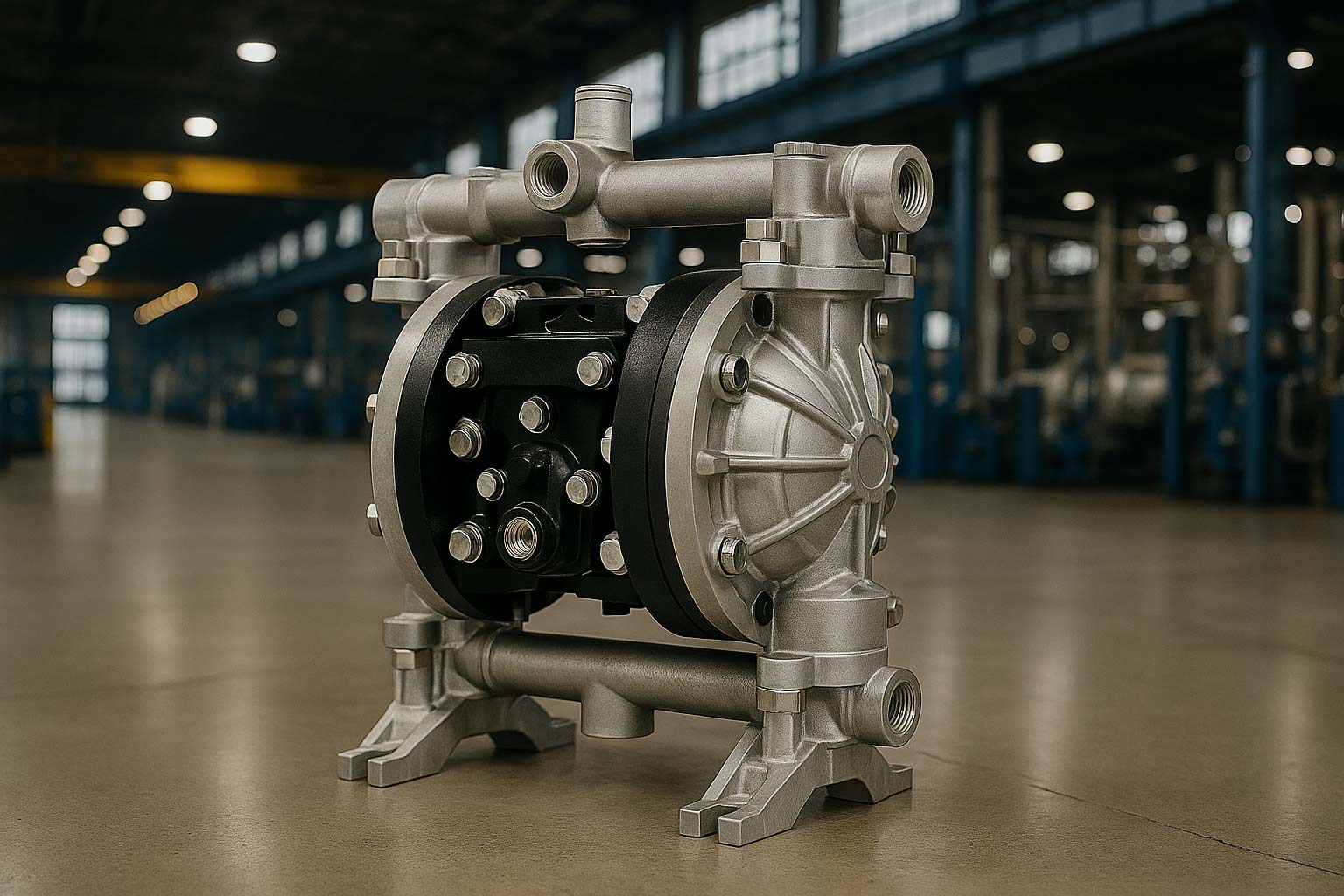Why Proper Agitation Matters
Those who work with paints, solvents, or other technical liquids know that the final result depends on many factors. Among these, agitation is often underestimated… until something goes wrong: layer separation, changes in viscosity, clumping, color variation, or worse—waste and rework.
Proper agitation keeps the mixture homogeneous throughout the usage phase, prevents the separation of components, and keeps the paint (or any other fluid) stable and ready for application. It’s not a detail—it’s a critical step for reducing waste, improving efficiency, and protecting the entire system.
What a Fluid Agitator Does
A fluid agitator is a mechanical system designed to keep solid particles or separated components suspended in a liquid. This could be pigments in paint, active ingredients in a chemical solution, or fluids that change behavior over time or with temperature shifts.
The effects of good agitation:
-
Prevents sediment buildup at the bottom of drums or tanks
-
Maintains consistent viscosity
-
Reduces unwanted foam formation
-
Improves final product quality
-
Prevents clogging of nozzles, pumps, or filters
All of this translates into higher productivity, consistent quality, and less unexpected maintenance.
Why Choose a Pneumatic Agitator?
Agitators can be manual, electric, or pneumatic. Among these, pneumatic agitators are the most common in production environments where safety, robustness, and flexibility are essential.
Main advantages of pneumatic agitators:
-
Operate safely in Atex environments: ideal in the presence of solvents or explosive atmospheres
-
Simple mechanics: fewer components subject to wear
-
Easy speed control using an air flow regulator
-
Particularly robust for continuous or heavy-duty operations
-
No electrical parts, making them ideal for humid or washdown environments
Where They’re Used: Coating, Chemicals, Pharmaceuticals and Beyond
Pneumatic agitators are used in a wide range of industries, each with specific needs. Here are a few practical examples:
Industrial Painting & Spray Coating
-
Two-component paints that require continuous mixing
-
Metallic or pigmented paints that settle quickly
-
Pressurized tank systems, where the agitator must work under controlled pressure
Chemicals
-
Concentrated solutions requiring gentle, even agitation
-
Reactive fluids that need low turbulence
-
Foaming agents that require low-shear impellers
Pharmaceuticals
-
Blends that are sensitive to temperature or incompatible metals
-
High hygiene and quick cleaning requirements
-
Often require AISI 316 stainless steel components
Impeller Types: The Heart of Agitation
The impeller is not just an accessory—it’s the active part of the mixing process, and it directly determines fluid behavior. Depending on its geometry, material, and angle, it can generate radial, axial, tangential, or mixed flow.
Most common impellers:
-
Marine-style propellers: axial flow, ideal for low-viscosity products
-
Radial impellers (disc or straight-blade): for low to medium intensity mixing
-
Pitched-blade or adjustable geometry: excellent for adapting to fluid behavior
-
Low-shear impellers: used where foam or emulsion breakup must be avoided
-
Multi-stage impellers: useful when the fluid is layered across levels (e.g., deep IBC tanks)
Common materials:
-
Anodized aluminum: lightweight and resistant, good with solvents
-
AISI 304/316 stainless steel: for food and pharmaceutical use
-
Non-stick polymers (on request): for aggressive or sticky fluids

Custom Solutions and Tailored Configurations
Each production line has specific requirements. That’s why choosing an agitator involves careful attention to several parameters:
-
Container type: 200 L drums, pressurized tanks, 1000 L IBCs, etc.
-
Shaft length, diameter, and material
-
Connection types: quick clamps, flanges, threaded fittings
-
Mounting style: flanged, on-lid, angled bracket
-
Variable speed: some setups require a wide RPM range (e.g., 60–600 rpm)

In many cases, agitation is integrated into automated painting systems, mobile tanks, or dosing units, requiring careful mechanical and ergonomic integration into the whole process.
How to Size an Agitator
One of the most frequent questions we get is: “I need an agitator for this fluid—how powerful should it be?”
The correct answer is: it depends—but there are clear criteria.
Key factors:
-
Fluid viscosity: thicker fluids need more torque and stronger impellers
-
Container volume: underpowered agitators = stratification
-
Tank shape: if tall and narrow, you’ll need a long or multi-stage impeller
-
Fluid type: is it reactive? does it contain solids? is it volatile?
Mistakes to avoid:
-
Using impellers that are too small → poor homogeneity
-
Over-agitating foaming products → problems in downstream processes
-
Ignoring dead zones: the impeller must move the entire volume, not just the bottom
Frequently Asked Questions (FAQ)
“Do I need an inverter to control the speed?”
→ No. Pneumatic agitators only require a simple air flow regulator. It’s cost-effective, safe, and easy.
“How long should the agitator shaft be?”
→ It depends on the container’s working depth. The impeller should remain at least two-thirds submerged at all times.
“Can I use the same agitator across multiple containers?”
→ Yes, with interchangeable mounts or adapter plates. But be mindful of the impeller’s compatibility with container volume and fluid type.
“How do I reduce bubble formation in paint?”
→ Use low-shear impellers, keep speeds low, and avoid tank corners and return points where air can be trapped.
“What happens if I leave it off for hours?”
→ Some products stratify quickly. In some cases, you need continuous agitation. In others, a timer-based restart is enough.
The Right Agitation Is the One You Don’t Notice
When an agitator works correctly, you don’t see it—but you feel the difference: no downtime, no rework, no waste. The paint flows evenly, the product stays stable, and the operator can focus on the job.
That’s why agitation isn’t just a “technical detail”—it’s a strategic element of the entire production line.
Choosing (and designing) the right system means protecting every other stage, from preparation to final finishing.

